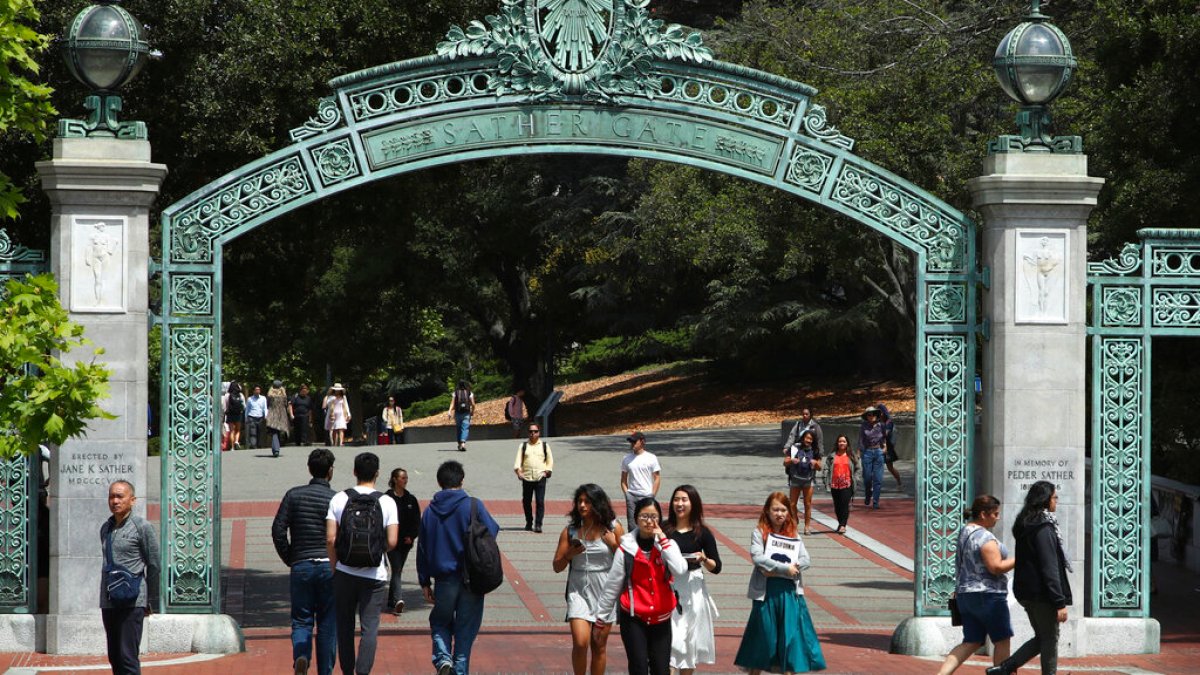
[ad_1]
Los Angeles, California, United States – Delainey spent the first five weeks of classes at the University of California, Santa Cruz, last year living on a friend’s couch and out of her car.
Delainey, who asked to be identified only by her first name, said the episode took a toll on her health and affected her academic performance.
“For the first night of the [academic period], I parked on campus and slept in my car,” she told Al Jazeera. “The next day I went to a friend’s house to warm up some food, and they ended up letting me crash on their couch for about a month.
“I ended up dropping about half of my courses. I struggled because of all the mental strain.”
Delainey eventually managed to find housing in Santa Cruz, a coastal town in northern California that has one of the tightest housing markets in the state. She now pays nearly $1,500 per month for a room in a two-bedroom apartment off campus.
Stories like Delainey’s have become more common across California, where college students pack into cramped apartments, cut back on groceries to pay for the ballooning cost of rent and are pushed into homelessness at alarming rates.
A 2021 memo (PDF) prepared for the state legislature found that nearly 20 percent of students at California Community Colleges reported experiencing homelessness alongside 5 percent of students at University of California schools and 10 percent of those attending California State University institutions.
That amounts to tens of thousands of students across California’s public university systems.
“Every college has homeless students,” said Eric Hubbard, director of development at Jovenes, a Los Angeles-based organisation that works with homeless students. “When folks are experiencing homelessness, it’s a lot of uncertainty. It’s a tremendous challenge to balance school with constantly being in survival mode.”
Spiraling costs
The 2021 analysis found that the average yearly cost of housing while attending a University of California school ranged from $14,000 to $17,000, often eclipsing the cost of tuition itself for California residents.
Universities offer a number of explanations for the prices: high construction costs, schools being located in cities where housing is already in high demand, local homeowners who are hostile to new student housing projects and a scarcity of space to build new housing.
In some cases, universities have had to turn down students they would otherwise have accepted because they had nowhere to house them. In an email to Al Jazeera, the University of California, Santa Cruz said that “recognizing the housing challenges, we reduced the size of our incoming cohort of students by about 800”.
California’s three public university systems are meant to bring higher education within reach for people from different backgrounds. For some students, such access can be life-changing.
Zack Collie, a graduate student at California State University, Fullerton, told Al Jazeera that attending college became a priority for him after he broke his neck at the age of 15, leaving him partially paralysed and curtailing his job options.
Collie said the state’s more affordable public university system has opened up opportunities that might not have existed otherwise. “Having my degree and soon my master’s has changed my future,” he said. “If I didn’t have this I have no idea what I’d be doing with my life.”
He said that access to affordable housing has helped ease his path forward. He lived in an on-campus apartment with extra space for a caretaker and a study area and later moved into an affordable housing complex where he has the space and quiet he needs to study.
“If I didn’t have affordable housing, I’d be living at home,” he said. “There’s no way I’d be able to pay what people charge for rent.”
But as affordable housing becomes more and more scarce, housing advocates warn that the promise of affordable education is slipping out of reach for many.
“The public university system is maybe the greatest engine for economic mobility the state has ever created,” said Ned Resnikoff, policy director at housing advocacy group California YIMBY. “But the housing crisis is increasing the cost of entry and making class stratification more rigid.”
Opposition from homeowners
Universities in the state have been under growing pressure to address the problem but can face strong and highly mobilised opposition from local homeowners who frequently oppose projects to build more housing for students.
To do so, they often use a law called the California Environmental Quality Act (CEQA), which is meant to safeguard local ecosystems by requiring an assessment of the environmental impacts of new development.
But critics say that in the hands of local homeowners, a law meant to protect the environment is being wielded to block projects that could help ease the student housing crisis.
Governor Gavin Newsom signed a bill this year that would allow on-campus housing projects to bypass some CEQA requirements.
The legislature also has allocated more than $2bn for student housing projects over three years, including funds for student housing in the community college system, which has not traditionally housed students.
Zennon Ulyate-Crow, a second-year student in Santa Cruz who helped organise support for the bill, said he became angry when local residents blocked an on-campus housing project that would have added 3,000 much-needed beds. They argued it would harm the area’s natural beauty.
“All of the pushback we’ve received has been from local homeowners. They’re completely insulated from these housing costs. Meanwhile, students are living in severely overcrowded conditions and struggling to find housing,” he told Al Jazeera. “It’s pulling up the ladder at its finest.”
[ad_2]
Source link




